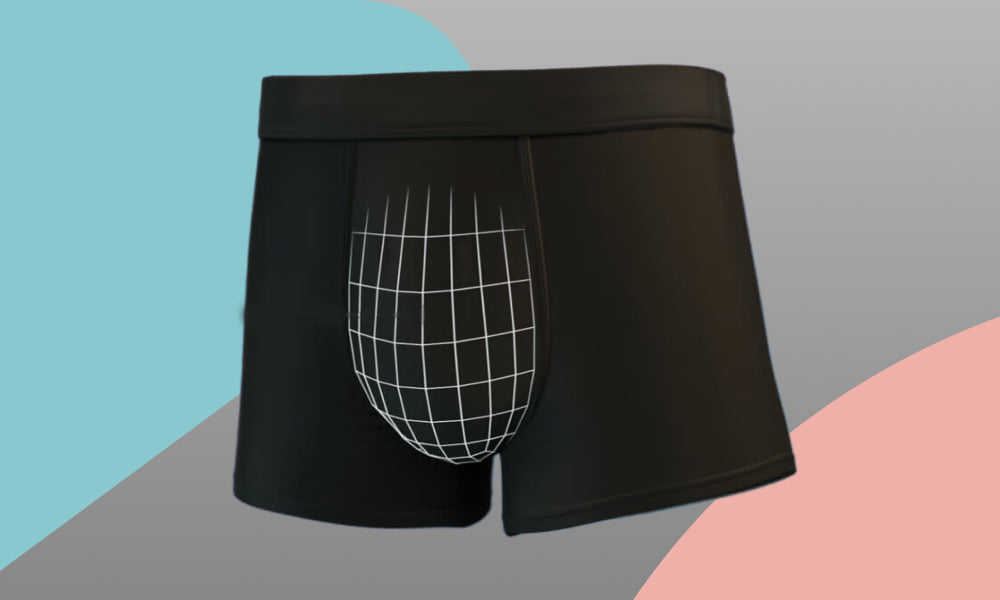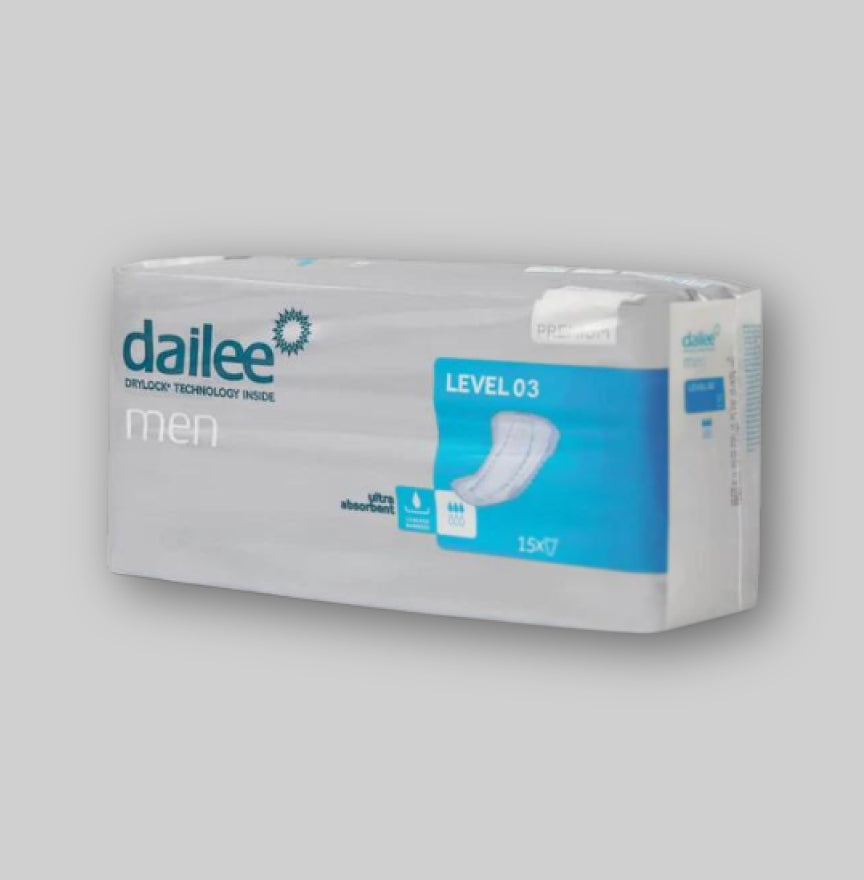People with loss of urine or incontinence often need help from their carers to deal with this. As a caretaker it is important to know how you can support someone with incontinence and how you can offer the right care. In this article some tips are given on how you can take care of someone with urine loss or incontinence.
Incontinence different causes have, such as a weakened pelvic floor, a neurological condition or a side effect of medication. It is important to find out the cause of incontinence and to coordinate care. Good communication between the caregiver, the person with incontinence and the caregiver is essential here.
As a caretaker you can also help to reduce incontinence by encouraging the person to drink enough and regularly go to the toilet. In addition, there are various tools available, such as incontinence material and toilet raisers, who can facilitate the daily lives of someone with incontinence.
Understanding of urine loss or incontinence
Definition and species
Incontinence refers To the inability to stop urine, which can lead to unwanted loss of urine. This can vary from an occasional leak to a complete loss of bladder control. There are different types of incontinence, under which stress incontinence, Urge incontinence, mixed incontinence and overflow incontinence.
Stress incontinence occurs when the pelvic floor and sphincter muscles of the bladder are weakened. This can be done as a result of pregnancy, delivery, menopause, overweight, operations or other factors that weaken the pelvic floor muscles. With Urge incontinence there is a sudden and intense urge to pee, followed by involuntary loss of urine. Mixed incontinence is a combination of stress incontinence and urge incontinence, while overflow incontinence occurs when the bladder cannot completely empty and urine leaks drop.
Causes of incontinence
There are various causes of incontinence, including age, pregnancy, delivery, menopause, overweight, chronic cough, neurological disorders, bladder or prostate problems, and certain medicines. In women, giving birth to children and menopause can lead to a weakening of the pelvic floor muscles, which can lead to incontinence. In men, an enlarged prostate or prostate cancer can lead to incontinence.
It is important to understand that incontinence is a common problem and that different treatment options are available to relieve the symptoms. It is advisable to consult a doctor for correct diagnosis and treatment.
First steps at Zorg
When someone experiences incontinence, it is important to offer the right care. Below are the first steps that must be taken when someone with someone with loss of urine Or incontinence.
Medical
The first step when taking care of someone with incontinence is to undergo a medical evaluation. This can be done by a doctor or a specialist. During this evaluation, the care provider will ask questions about the symptoms, medical history and any medication that the person uses. A physical examination can also take place and a urine examination can be done.
Drawing up a care plan
After the medical evaluation it is important to draw up a care plan. This plan must be drawn up in consultation with the care provider and the person who experiences incontinence. The following matters must be included in the care plan:
- The frequency of changing incontinence material
- Which incontinence material should be used
- How the incontinence material should be applied
- How the person can order or obtain incontinence material
- Which medication may be needed
- Any changes in diet or lifestyle
It is important that the care plan is regularly evaluated and adjusted if necessary. In this way it can be ensured that the person gets the best possible care.
Daily healthcare practices
Hygiene
One of the most important aspects of daily care practices for someone with loss of urine or incontinence is hygiene. It is important to keep the skin clean and dry to prevent irritation and infections. Here are some tips:
- Use soft wipes or washcloths to clean the skin. Avoid rough or perfumed products that can irritate the skin.
- Wash the skin with lukewarm water and mild soap. Avoid hot water and aggressive soaps that can dry out the skin.
- Dry the skin thoroughly with a soft towel. Pat the skin carefully dry, do not rub.
- If necessary, use an ointment or cream to protect and hydrate the skin.
Comfort and dignity
In addition to hygiene, it is important to guarantee comfort and dignity with daily care practices for someone with urine loss or incontinence. Here are some tips:
- Provide comfortable clothing that is easy to put on and off. Avoid tight clothing that can irritate the skin.
- Use incontinence material that fits the individual needs and ensure that it is properly confirmed. This can help prevent leakage and reduce the feeling of discomfort.
- Respect the privacy of the person and ask permission before you start the daily healthcare practices.
Use tools
There are various tools that can help with daily healthcare practices for someone with loss of urine or incontinence. Here are some examples:
- Incontinence material, such as diapers and insert, can help prevent leakage and reduce the feeling of discomfort.
- Bed protectors and mattress protectors can help keep the bed clean and dry.
- Toileters and handles can help to make the use of the toilet easier and safer.
It is important to consult with a healthcare provider to determine which tools are most suitable for individual needs.
Dealing with challenges
Emotional support
When someone in your care losses urine or incontinence, this can take an emotional toll. It can lead to feelings of shame, frustration and discomfort. It is important to remember that this is a common problem and that there are ways to deal with it.
One of the most important things you can do is support and encourage your loved one. Listen to their worries and give them room to express their emotions. Encourage them to seek professional help and encourage them to stay active and participate in activities that they like.
Practical tips in accidents
It can be difficult to deal with accidents as a result of urine loss or incontinence. Here are some practical tips to help you:
- Always keep spare clothing on hand, so that your loved one can change clothes after an accident.
- Use incontinence material that is suitable for the degree of incontinence of your loved one. There are different types available, including disposable and washable options.
- Use watertight protection on mattresses and seats to prevent damage.
- Help your loved one regularly go to the toilet to prevent accidents.
- Ensure good hygiene to prevent infections.
By following these practical tips and supporting your loved one, you can deal with urine loss or incontinence and the challenges it entails.
Lifestyle adjustments
Diet and moisture intake
A healthy diet and sufficient moisture intake are important for people with loss of urine or incontinence. A diet that is rich in fiber can help prevent constipation, which can lead to loss of urine. It is also important to drink enough water to prevent dehydration, but it is also important to take the intake of Caffeine and alcohol because these substances can irritate the bladder and cause urine loss.
Bladder training
Blowing training can also help with urine loss or incontinence. The purpose of bladder training is to train the bladder to empty at a specific time. This can be achieved by gradually extending the time between toilet visits. It is also important to train the pelvic floor muscles, because these muscles support the bladder and help in control the urine.
People with loss of urine or incontinence must also regularly go to the toilet to prevent the bladder from becoming too full. It is also important to practice regularly to strengthen the pelvic floor muscles. This can be done by Kegel exercises to do. By making these lifestyle adjustments, people with urine loss or incontinence can reduce their symptoms and improve their quality of life.
Professional care options
Home care
For people with incontinence living at home, hiring a professional home care service can be a good option. Home care providers can help you change incontinence material, offering personal care and supporting the patient in managing incontinence.
The home care providers can also help arrange the right tools, such as incontinence material and bed protection. They can also give advice on how to deal with incontinence and how the patient and his or her caregivers can deal with it.
Incontinence therapy
Incontinence therapy is another professional care option for people with incontinence. This includes working with a physiotherapist or a specialized nurse to strengthen and train the muscles in the pelvic area. This can help to reduce urine loss and improve bladder control.
In addition, there are other forms of incontinence therapy, such as medication, which can be prescribed by a doctor. It is important to consult with a healthcare provider about which form of incontinence therapy is most suitable for the patient.
Professional care options can play an important role in supporting people with incontinence. It is important to consult with a healthcare provider about which options are most suitable for the individual needs and circumstances of the patient.
Support for healthcare providers
Taking care of someone with urine loss or incontinence can be challenging for caregivers. It is important that healthcare providers know that they are not alone and that there are different sources of support available.
Respite
Respite care can be a useful source of support for care providers. This refers to temporary care that is provided to the person with incontinence, so that the care provider has time to rest or perform other tasks. This can vary from a few hours a week to several days a month, depending on the needs of the care provider and the person with incontinence. Respite care can be provided by family members, friends or professional care providers.
Educational sources
There are various educational sources available for care providers who take care of someone with incontinence. These sources can offer information about how incontinence can be managed and how the person with incontinence can be provided. They can also offer tips on how to deal with the emotional and psychological challenges of taking care of someone with incontinence.
Some examples of educational sources are:
- Brochures and pamphlets of health organizations
- Online forums and support groups for healthcare providers
- Workshops and training courses offered by health organizations or healthcare providers.
It is important that healthcare providers know that they are not alone and that there are different sources of support available. By using these sources, care providers can improve their knowledge and skills and offer better care to the person with incontinence.















